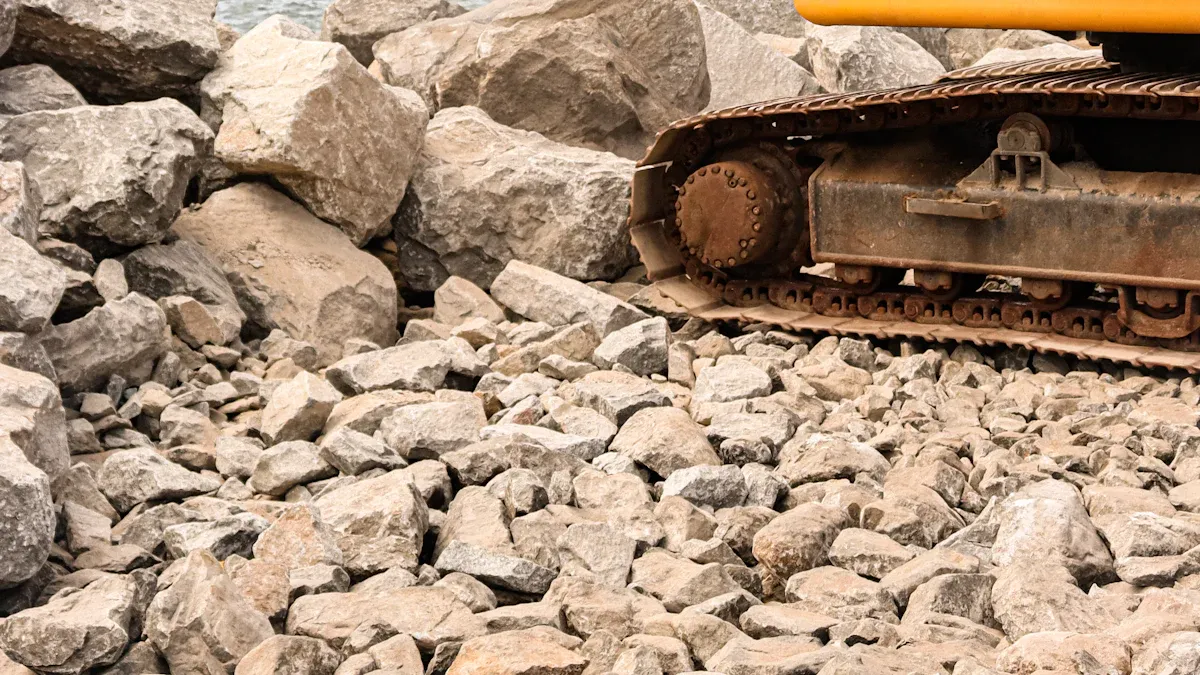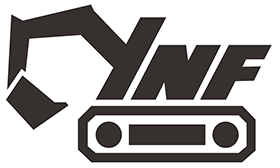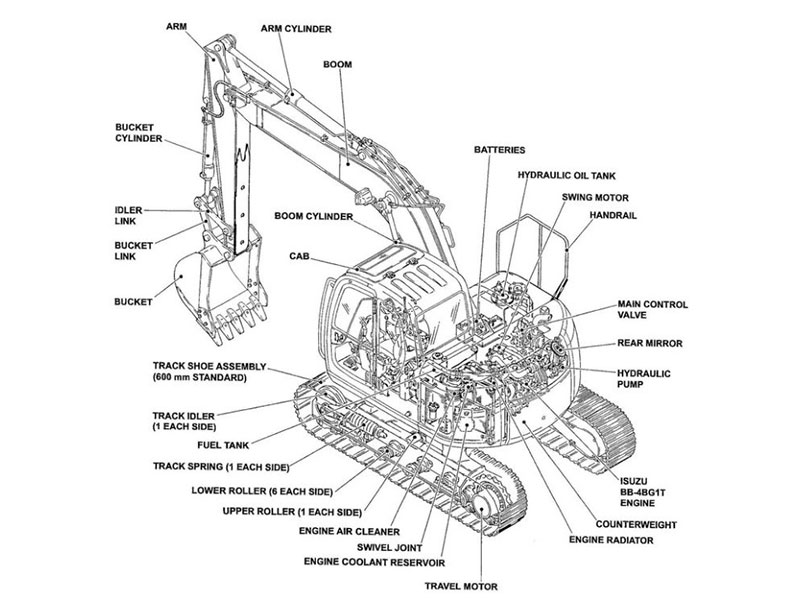
Start every day by looking at your caterpillar excavator for damage or leaks. You keep your machine safe by doing regular checks and being careful. Caterpillar says to use real 215 cat excavator parts for the best work. You use good habits to make sure your machine works well. These ideas help you stop problems and keep your caterpillar equipment working.
Key Takeaways
Look at your Cat 215 excavator every day. Check for leaks and loose parts. Check fluid levels too. This helps you find problems early. It keeps your machine working well.
Use real Cat 215 parts when you fix it. Clean your machine often. This helps it work better. It can stop expensive repairs.
Test all safety features each day. Check seat belts and warning lights. This keeps you and others safe at work.
Do maintenance on a regular schedule. Change the oil and add lubrication. This helps your excavator last longer. It stops breakdowns.
Write down all maintenance and repairs. Keep good records. This helps you know your machine’s health. It helps you plan care for the future.
Daily Maintenance Tips
Walkaround Inspections
Begin your day by walking around your caterpillar excavator. Look under it for leaks. See if any bolts are loose or parts are missing. Check the tracks and undercarriage for damage. Doing this every day helps you find problems early. This can stop bigger issues from happening later.
Tip: Use a checklist so you do not forget any inspection steps.
Fluid Level Checks
Look at all fluid levels before starting the engine. Check the engine oil, hydraulic fluid, and coolant. Low fluids can hurt your caterpillar equipment. Add more fluid if any are too low.
Engine oil helps the engine run well.
Hydraulic fluid moves the arm and bucket.
Coolant keeps the engine from getting too hot.
Doing these things every day protects your machine.
Filter and Fuel System Care
Keep the fuel system clean for your caterpillar excavator to work right. Drain the water separator daily to get water out of the fuel. Water in the fuel can damage the engine. Look at the air and fuel filters for dirt or clogs. Change them if they are dirty.
Note: Cleaning the fuel system often stops breakdowns and keeps your machine working well.
Safety Feature Testing
Check all safety features before using your caterpillar excavator. Make sure the seat belt works and locks. See if all safety lights turn on. Test the horn and backup alarm. These things keep you and others safe at work.
Always wear your seat belt when using the machine.
Make sure warning lights are bright and easy to see.
Checking safety features every day is a good habit. This is part of regular maintenance and keeps your caterpillar equipment safe.
Undercarriage Maintenance

Undercarriage Inspections
You need to check the excavator undercarriage every day. Look for rocks, mud, or other debris stuck between the tracks. These things can cause damage if you leave them there. Use a flashlight to see under the caterpillar excavator. Pay attention to the rollers, idlers, and sprockets. If you see any cracks or missing pieces, write them down.
Tip: Make a habit of doing undercarriage inspections before you start work. This helps you catch problems early.
Track Cleaning
Tracks collect dirt and debris during work. You should clean the tracks at the end of each shift. Use a pressure washer or a stiff brush to remove mud and stones. If you skip cleaning, the caterpillar excavator can wear out faster. Clean tracks help the machine move smoothly.
Remove large chunks of mud by hand.
Wash away small particles with water.
Check for anything stuck between the track pads.
Track cleaning is a key part of undercarriage maintenance. You protect your caterpillar equipment and keep it running well.
Wear and Damage Checks
You must look for signs of wear on the excavator undercarriage. Check the track pads for thin spots or cracks. Inspect the bolts and nuts to make sure they are tight. If you see loose bolts, tighten them right away. Look at the rollers and idlers for dents or chips.
Note: Write down any damage you find during inspections. This helps you remember what needs fixing.
Regular undercarriage maintenance keeps your caterpillar excavator safe and strong. You avoid costly repairs and make your machine last longer. When you follow these steps, you get better performance from your caterpillar equipment.
Preventive Maintenance Schedule
Service Intervals
You should follow a regular maintenance plan for your caterpillar excavator. The Operation and Maintenance Manual tells you the best times for service. Change the engine oil and put in new filters every 250 hours. This helps your caterpillar equipment work well.
Tip: Write down service dates or set reminders. Doing this helps you remember and avoid expensive repairs.
Lubrication Points
Lubrication helps moving parts work smoothly. You need to grease all pivot points and joints every day. Use the right lubricant for your caterpillar excavator. Look in the manual to find the correct kind.
Grease the boom, stick, and bucket pins.
Lubricate swing bearings and track rollers.
Wipe off old grease before adding new grease.
Lubricating often makes your machine work better and last longer. You protect your caterpillar machine and help it stay strong.
Hydraulic System Checks
Hydraulic systems make your caterpillar excavator move. You should look at hoses and connections for leaks. Check the hydraulic fluid level and see if it looks clean. Dirty or low fluid can make the machine work badly.
Note: Clean hydraulic filters and change them when needed. This helps your caterpillar excavator use fuel well.
Listen for odd sounds or slow movement. These can mean something is wrong. Taking care of the hydraulic system helps you stop breakdowns.
Cooling System Care
Cooling systems keep your caterpillar excavator from getting too hot. You should check the radiator and coolant level often. Clean the radiator fins to get rid of dust and dirt.
Use a soft brush or compressed air.
Look at hoses for cracks or leaks.
Change coolant when the manual says to.
Taking care of the cooling system keeps your caterpillar excavator working well. You lower the chance of engine problems and help your equipment last longer.
215 Cat Excavator Parts

Genuine Parts Use
When you pick genuine 215 cat excavator parts, you protect your investment. These parts fit your caterpillar machine just right. You get better performance and your machine lasts longer. Aftermarket parts might look the same, but they wear out faster. Using original 215 cat excavator parts helps you avoid surprise breakdowns.
Tip: Always check the part number before you buy. This makes sure you get the right 215 cat excavator parts for your caterpillar equipment.
Using genuine parts saves you time and money. Your machine works smoother. You also keep your warranty safe. Caterpillar says to use only approved 215 cat excavator parts for fixing and replacing.
Attachment Maintenance
Attachments help your 215 cat excavator parts do more work. You need to care for buckets, thumbs, and hydraulic hammers. Clean each attachment after you finish working. Dirt and debris can hurt moving parts.
Look at pins and bushings for wear.
Grease all joints and pivot points.
Keep attachments in a dry place.
Check for cracks or bent metal. Replace broken 215 cat excavator parts right away. You keep your caterpillar excavator safe and strong.
Note: Use a table to track attachment care. Write down the date, type of attachment, and repairs.
Date | Attachment Type | Maintenance Done | Notes |
|---|---|---|---|
2025-03-01 | Bucket | Greased pins | No damage found |
2025-03-02 | Thumb | Cleaned debris | Needs new pin |
You get the best results when you care for attachments and use genuine 215 cat excavator parts. Your caterpillar machine works better and lasts longer.
Troubleshooting Tips
Identifying Leaks
You can spot leaks early and save money on repairs. Look under your caterpillar machine for puddles or wet spots. Check hoses, cylinders, and fittings for drips. Use a clean rag to wipe parts and see if any fluid appears. If you find oil or coolant on the ground, you need to act fast.
Tip: Write down where you see leaks. This helps you explain the problem if you need help later.
Leaks can raise your caterpillar excavator maintenance cost. Fixing small leaks right away keeps your machine safe and lowers repair bills.
Error Codes
Modern caterpillar excavators show error codes on the display. These codes tell you if something is wrong. When you see a code, stop and read the manual. The manual explains what each code means.
Write down the code number.
Check the manual for steps to fix the problem.
Clear the code if the manual says it is safe.
Some codes mean you can keep working. Others mean you must stop. Ignoring codes can increase your caterpillar excavator maintenance cost. Always follow the manual for safe operation.
When to Call a Pro
You can fix many small problems yourself. Sometimes you need a trained caterpillar technician. Call a pro if you see these signs:
Leaks that do not stop after tightening parts.
Error codes that will not clear.
Strange noises or smoke from the engine.
Note: Professional help keeps your caterpillar safe and lowers long-term maintenance costs.
A pro can check your machine with special tools. You protect your investment and avoid bigger repairs. Good maintenance and quick action help you control your caterpillar excavator maintenance cost.
Extending Machine Life
Operator Habits
You play a big role in how long your machine lasts. Good habits help you get the most out of your equipment. Always start by warming up the engine before you begin work. Use smooth movements when you operate the controls. Avoid sudden stops or sharp turns. These actions lower wear and tear.
Tip: Take breaks during long shifts. This gives your machine time to cool down and helps with efficiency.
You should also watch the gauges and listen for strange sounds. Quick action can stop small problems from becoming big ones. When you focus on maximizing fuel efficiency, you save money and protect your machine.
Storage and Cleaning
Proper storage keeps your equipment safe. Park your machine on solid ground. Choose a dry spot away from mud and water. Cover your equipment if you store it outside. This protects it from rain and sun.
Clean your machine after each job.
Remove dirt from the cab and controls.
Wash the exterior to stop rust.
A clean machine works better. You improve efficiency and lower repair costs.
Note: Use a checklist to make sure you finish all cleaning steps.
Maintenance Records
Keeping good records helps you track your work. Write down every service and repair. Use a notebook or a digital app. Record the date, type of service, and parts replaced.
Date | Service Type | Parts Replaced | Notes |
|---|---|---|---|
2025-04-10 | Oil Change | Oil Filter | No issues found |
2025-04-15 | Track Repair | Track Pad | Pad replaced |
You spot patterns and plan future maintenance. Accurate records help you keep your excavator running well. You make smarter choices and avoid costly surprises.
You keep your Cat 215 excavator safe by checking fluids each day. Clean the tracks often to stop problems. Look for damage before you start working.
Using real Cat parts helps your machine work better.
Doing regular maintenance can help you spend less on repairs.
Test safety features and write down each service to keep your machine safe.
Read your Operation and Maintenance Manual every time. Use Cat’s diagnostic tools to stay informed. These steps help your machine work well and break down less.
FAQ
How often should you change the engine oil on your Cat 215 excavator?
You should change the engine oil every 250 hours of use. Check your Operation and Maintenance Manual for exact intervals. Regular oil changes help your engine run smoothly and last longer.
What fluids do you need to check daily?
You need to check engine oil, hydraulic fluid, and coolant every day.
Tip: Always top off fluids before starting work to prevent damage.
Can you use aftermarket parts for your Cat 215 excavator?
You should use genuine Cat parts for best results. Aftermarket parts may not fit well or last as long.
Part Type | Recommended? |
|---|---|
Genuine Cat | ✅ Yes |
Aftermarket | ❌ No |
What should you do if you see an error code on your display?
Stop the machine and write down the code. Look up the code in your manual.
If you cannot fix the issue, call a certified Cat technician for help.





